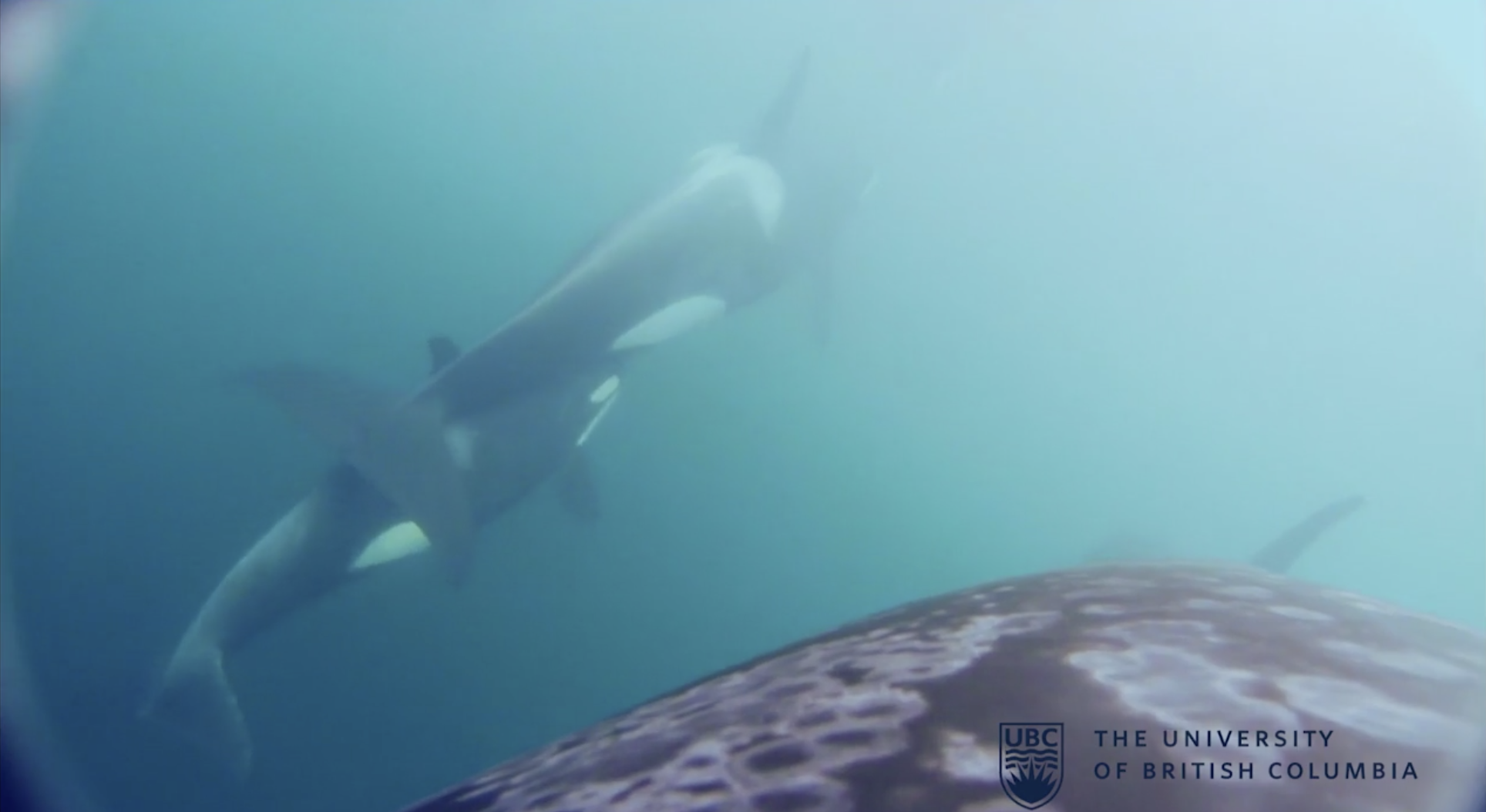
Sneak peak into the lives of killer whales
For the past two weeks, UBC Researchers led by Dr. Andrew Trites have been studying the feeding behaviours of northern resident killer whales. They are using hydroacoustics to assess prey abundance, and are placing suction-cup camera tags onto whales to record what they see and hear, as well as their three-dimensional movements, diving depths and feeding behaviours.
The video is a sneak peak into some of the things they are recording. The video was taken by D26 (a 10 year old member of the D1 pod) from its orca-cam. Each frame of the video has corresponding data on depth, speed, vocalizations and 3D-movement. The video shows D26 interacting with other family members as they travel together through Queen Charlotte Strait.
The researchers were surprised to see how different the skin of a killer whale looks underwater. The skin appears completely black above water, but appears quite different underwater most likely due to lighting.
They shared the images with a pathologist and a veterinarian who thought we are seeing edema (spongiosus) based on dead orcas that they have examined. Edema is a skin condition that should resolve with time, and may be associated with nutritional and health condition, or a change in the environment.
This is the most marked up whale the researchers have seen so far, but all have shown unexpected skin colourations and lesions such as in this video from D26.
The research team are making daily posts on the MMRU Facebook page www.facebook.com/marinemammal should you wish to follow.
